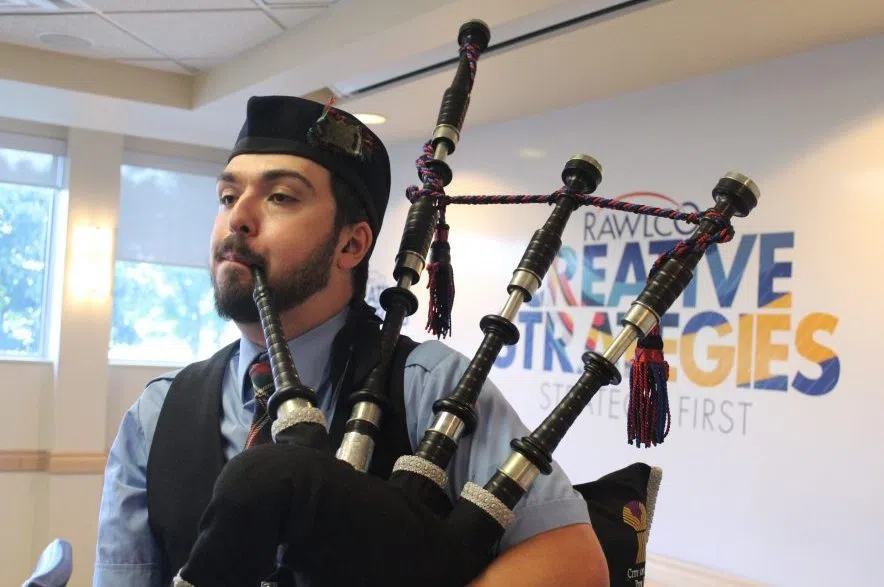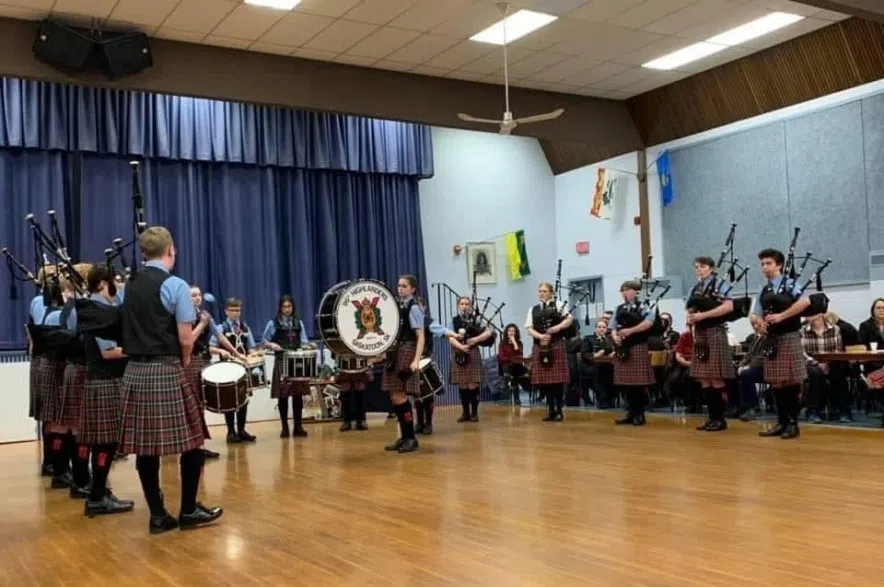You don’t often expect to hear the sound of bagpipes in the middle of Saskatoon, but when you do, it turns heads. It’s loud, a little strange and completely unforgettable.
Nate Linsley’s love of the unique instrument all started with a simple ad in the city’s leisure guide.
Read more Saskatchewan Stories from Brittany Caffet:
- Poems for $1: Meet the Saskatchewan girl selling kindness by the line
- Northern skies, family ties: The Paceys and the legendary Beaver
- Saskatchewan’s own Nessie? The tale of the Turtle Lake Monster
“My mom found an ad in the leisure guide when I was maybe, I think I was eight, offering bagpipe lessons,” he said. “And so she brought it up and I thought, ‘Why not? That’d be super cool.’”
Today, Linsley is the director of the 96th Highlanders, a nonprofit organization dedicated to promoting Celtic music and culture in Saskatoon.
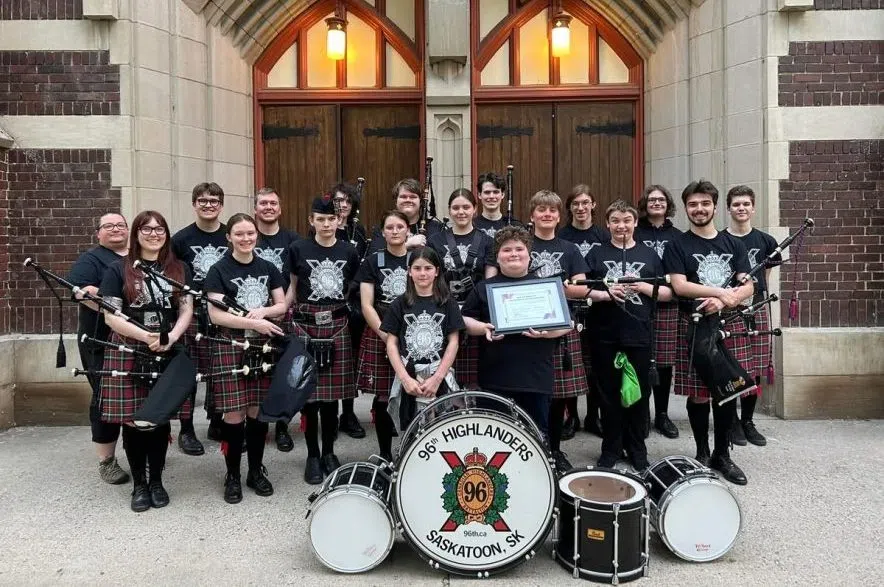
The 96th Highlanders bring serious energy. Featuring members age seven to 21, this youth band keeps Celtic traditions alive one note at a time. (Submitted)
“We offer instruction for youth in bagpipes, Highland snare drum, tenor drum and bass drum,” he said. “We’ve got six instructors and we’ve got about 20 students right now.”
The idea of 20 kids all learning to play the bagpipes at once sounds chaotic, but there’s method to the madness.
Listen to the story on Behind the Headlines:
A humble start with a practice chanter
Linsley didn’t always feel deeply connected to his Scottish roots.
“I was never really super in touch,” he admitted. “My grandpa passed away when I was really young.”
But once he picked up the practice chanter — a smaller, quieter version of the bagpipes — he said he was hooked.
“It’s kind of like the bagpipes, but without some of the more complicated parts,” he explained. “It’s smaller, quieter, easier to play… it helps you learn where your fingers go (and) how to play the notes.”
It took Linsley about a year of chanter practice before graduating to the real thing. That’s when things got serious — and seriously fun.
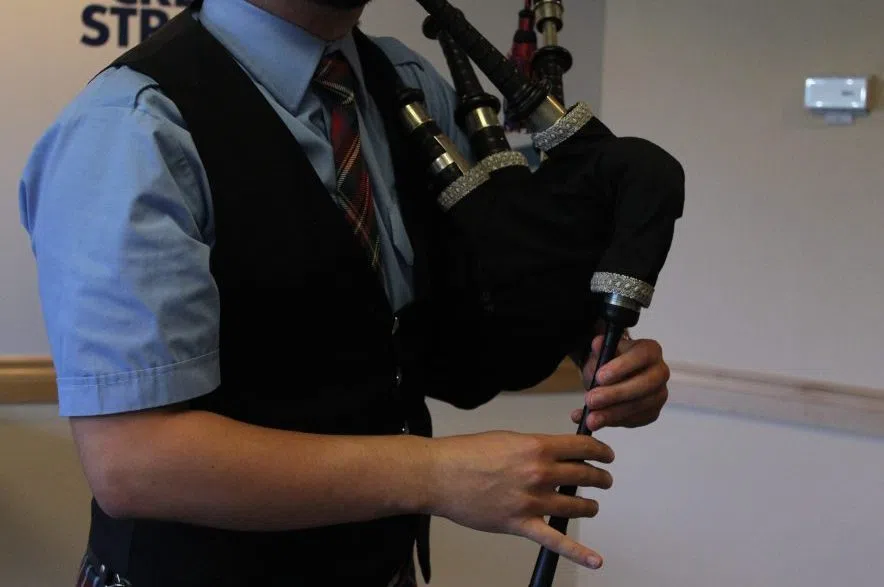
With only nine notes to work with, bagpipers can’t play just anything, but they learn how to make those notes count. (Brittany Caffet/650 CKOM)
‘This takes a lot of air!’
“The typical reaction?” Linsley laughed, “’Wow, this is hard. Wow. This takes a lot of air.’ But also they’re super excited. Everyone knows the bagpipes. Everyone likes the bagpipes. It’s a pretty unique sound. As soon as they’re able to start kind of making noise on it, their eyes light up. They’re like, ‘Whoa. This is awesome.’”
It is awesome, but the instrument can also be a serious challenge.
“There aren’t any rests in bagpiping,” he said. “It’s constant noise from start to finish.”
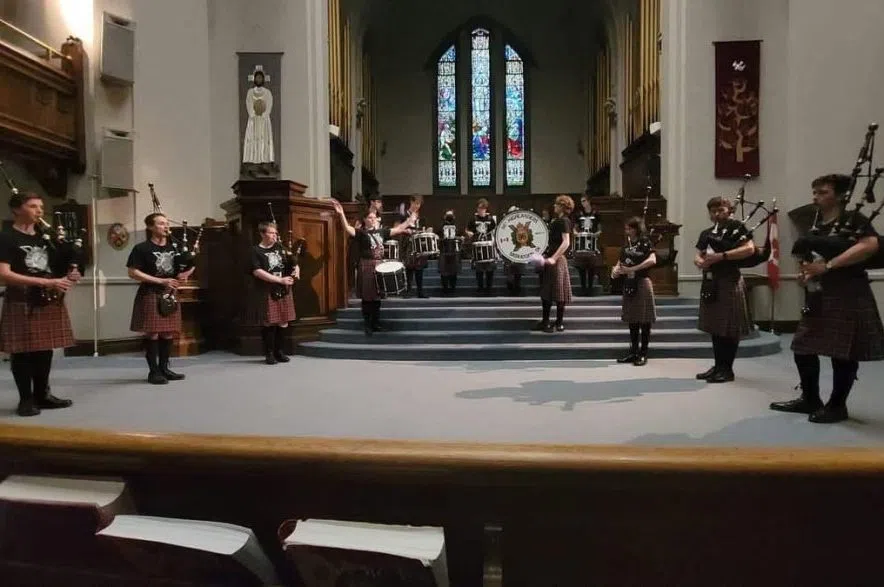
This isn’t just a performance; it’s a cultural revival in real time. The 96th Highlanders are proof that Celtic roots can grow strong, even in the middle of the Canadian prairies. (Submitted)
The bag itself plays a crucial role in keeping the noise going.
“The point of the bag is to allow the instrument to keep making noise while you’re taking a breath,” Linsley explained.
“You’re blowing into the bag, and while you’re breathing in you’re squeezing the bag with your arm to keep the music going. And at the same time, you’re moving your fingers to get the notes. And then, on top of all that, you’ve got to keep everything in tune.”
Keeping it in tune might be the most crucial part of a performance.
“I think if you don’t like the bagpipes, it’s just because you haven’t heard a bagpiper playing in tune,” Linsley said.
A small but mighty community
Despite its complexity, or maybe because of it, the bagpiping community is a close-knit one.
“It’s not a huge community that plays the bagpipes,” Linsley admitted. “It’s bigger than you would think, but it’s such a kind of niche instrument and a unique community that we all kind of know each other.”
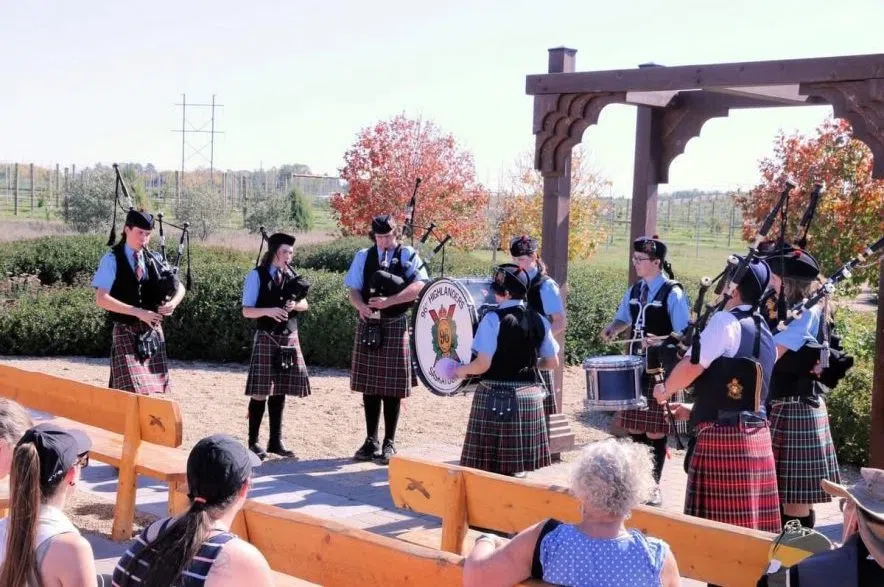
They may only have nine notes to work with on their pipes, but the 96th Highlanders make every one of them count. (Submitted)
In that small circle, saying you’re a bagpiper tends to get attention.
“That’s probably the best part,” he said. “When you say, ‘I’m a bagpiper,’ everyone in the room is like, ‘Whoa, you’re a bagpiper? I want to talk to that guy. I want to know about the bagpipes. I want to see what that’s like.’ So yeah, it’s a super cool instrument to play.”
Even cooler are some of the songs that bagpipers get to play.
“One I get asked a lot about when I’m playing, which would be pretty surprising, is ‘Thunderstruck,’ actually,” Linsley said with a laugh.
“It’s not something that you typically learn as a bagpiper.”
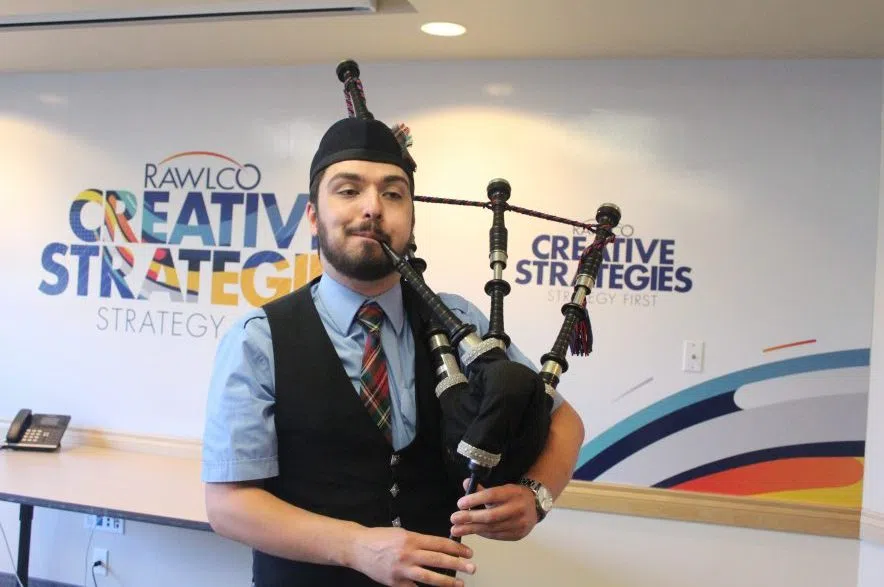
Teaching the bagpipes means teaching persistence. Linsley guides students through squeaks, slips and stubborn notes. (Brittany Caffet/650 CKOM)
Still, the modern playlist of the 96th Highlanders isn’t as vast as you might think.
“We’re kind of limited. We’ve got nine notes on the bagpipes, so not a lot there,” he said. “But there’s definitely lots you can play. There’s traditional bagpipe tunes, but also pop songs like ‘Pink Pony Club’ by Chappell Roan, ‘Country Roads,’ and ‘Don’t Stop Believin’.’”
Join the band — No kilt required
If you’re wondering whether you’d fit into the tartan-clad world of Highland music, Linsley has one thing to say: Don’t worry about it.
“We are always looking for new members,” he said. “We accept members ages seven to 21. There’s no experience necessary at all, and you don’t need to be Scottish to join the 96th Highlanders. We’ve got lots of kids that aren’t Scottish at all.”
Regardless of your background, you can consider yourself invited to puff your cheeks, pick up some pipes and join the band.
